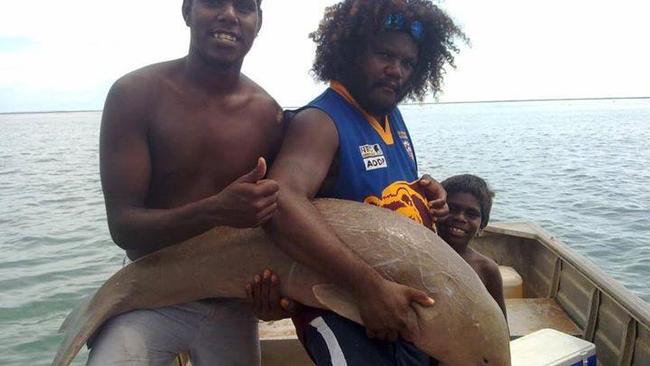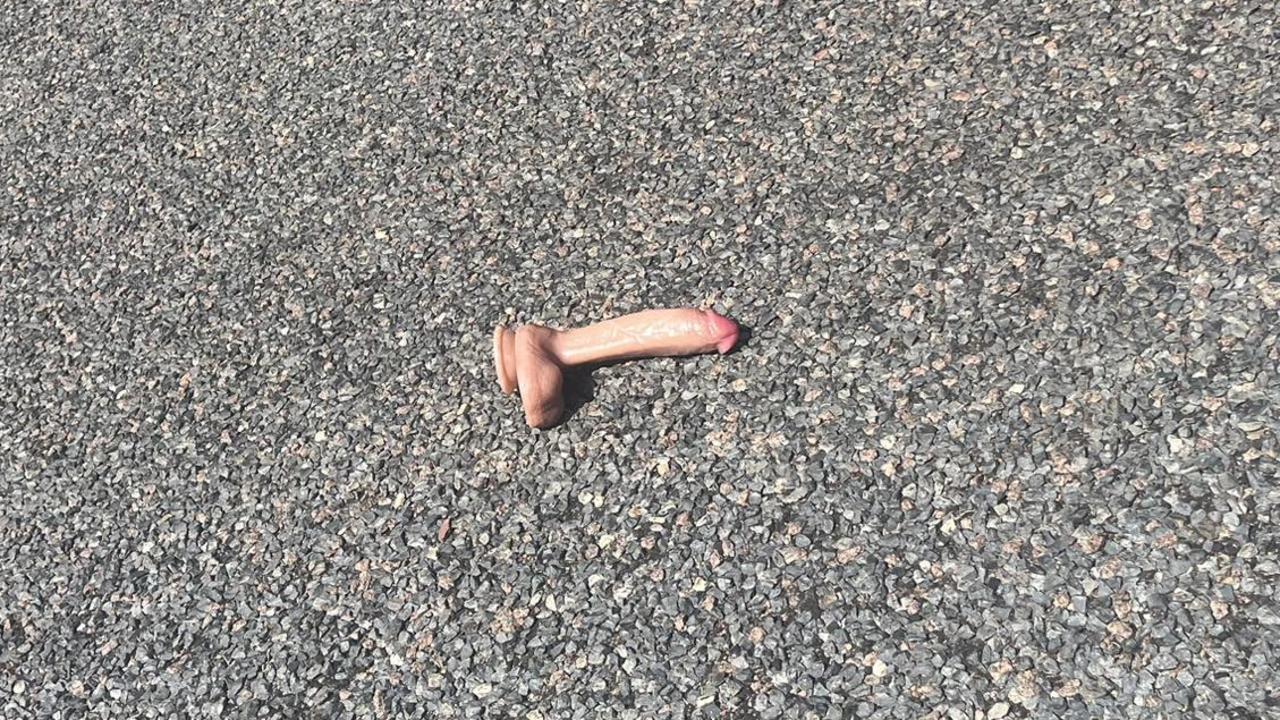Hunter claims dugongs are not low in numbers in Northern Territory waters
A HUNTER has hit back at calls to ban dugong hunting, saying there’s no proof the animal is an endangered species despite its global classification as ‘vulnerable’.

Northern Territory
Don't miss out on the headlines from Northern Territory. Followed categories will be added to My News.
A BABY dugong is captured by traditional hunters to attract the mother who is then harpooned before its offspring is released back into the water to fend for itself.
Tiwi Islands man Frances Vigona-Daniels, 26, said he and his mates “sometimes” use this hunting tactic to capture adult dugongs in Territory waters.
Mr Vigona-Daniels said he kills two to four adult dugongs for food most weekends, depending on the tide.
“We harpoon them with a homemade turtle prong, they die straight up,” Mr Vigona-Daniels said.
“We do it because it’s like bush tucker to us, we enjoy eating it.
“We just see them as a food source, we don’t go hunting for fun, we go hunt to feed family.
“We don’t go every day, we’re not killing them all.”
READ: DUGONG DEATHS ON PAR WITH WHALES
The captured dugong is “cut up to make it lighter in the boat” and soon delivered to indigenous communities where it is cooked and shared among families for regular and ceremonial feasts.
“It could last up to a month and a half,” Mr Vigona-Daniels said.
“We don’t go for the youngest, the smallest ones, we let them live.”
Hunting dugong for food is an ancient tradition, firmly embedded in indigenous culture and dating back thousands of years.
Mr Vigona-Daniels said the practice has been passed on through many generations all over the Top End.
“Our great, great grandfathers hunted dugong and their great, great grandfathers hunted dugong,” he said.
“It’s common around here, it’s just like eating meat like lamb or chops.”
Mr Vigona-Daniels’ has spoken publicly about dugong hunting after Australian conservationist Colin Riddell yesterday called for “an urgent change to the Native Title Act 1993, so that any endangered or vulnerable animal or marine life is excluded from hunting by any means, for any reason”.
READ: OUTRAGE AT DUGONG ON NAIDOC MENU
Dugongs are listed as ‘near threatened’ in NT waters and ‘vulnerable’ in Queensland and globally.
Dugongs are protected by the Territory Parks and Conservation Act and the federal Environment Protection and Biodiversity Conservation Act.
But there is an exception for indigenous people who have the right to hunt dugongs under the Aboriginal Land Rights Act and Native Title Act.
Mr Riddell said “traditions and culture cannot take precedence over extinction” and described the practice as brutal.
But Mr Vigona-Daniels said there was “no proof” that dugongs were low in numbers.
“There’s a big sea, you don’t know how much dugongs are in the sea. You’re not going around the Top End and counting how much dugong are there,” Mr Vigona-Daniels said.
“How they gonna’ know they are running low on dugongs? They’ve got no proof.”
Parks and Wildlife Commission NT spokesman Edwin Edlund said there was no official record of current dugong population numbers in the Territory.


